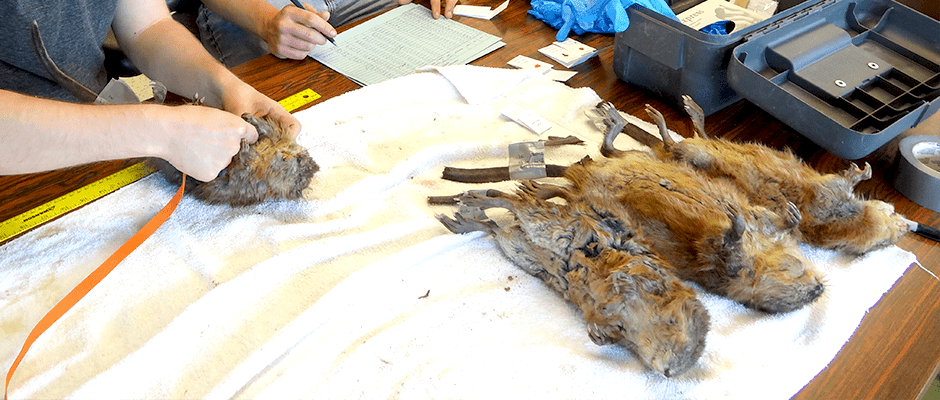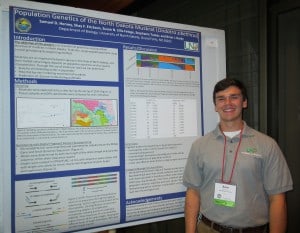Share this article
TWS 2015 Student Poster Winner: North Dakota Muskrats
When it comes to tracking the genetic similarity of one muskrat to another, the best thing to do is go the way the river flows, according to research presented at The Wildlife Society’s 2015 Annual Conference in Winnipeg.
“We assumed that muskrats were going to be more related based on geographic range, but we found that they were more related to each other based on watershed,” said Samuel Hervey, an undergraduate student at the University of North Dakota. Hervey and Shay Erickson tied with another student for first place in the undergraduate category of the student poster competition at the conference.
Hervey’s work features an effort to understand the muskrat (Ondatra zibethicus) populations of North Dakota using molecular tools. He worked with another student whose Master’s project consisted of gathering tissue samples from muskrats trapped at four different sites in the state. Hervey extracted DNA from the samples and compared the genetics of the individual muskrats.
He’d assumed muskrats found in areas nearby each other would be the most genetically similar, but it turned out that watershed connectivity was a better indicator — two of the muskrat specimens that were farthest from each other geographically were the closest genetically.
“The cool part is that when you think of animals dispersing across the landscape, you kind of think that it’s about geographic distance,” Hervey said. But muskrats are semi-aquatic, and are more likely to use ponds, slews or other waterways when dispersing.
He said that the study highlights how important it is when constructing highways or other potential barriers.
“You have to think about aquatic systems,” he said.
Header Image:
Shay Erickson and Samuel Hervey measuring muskrats.
©Susan Felege









